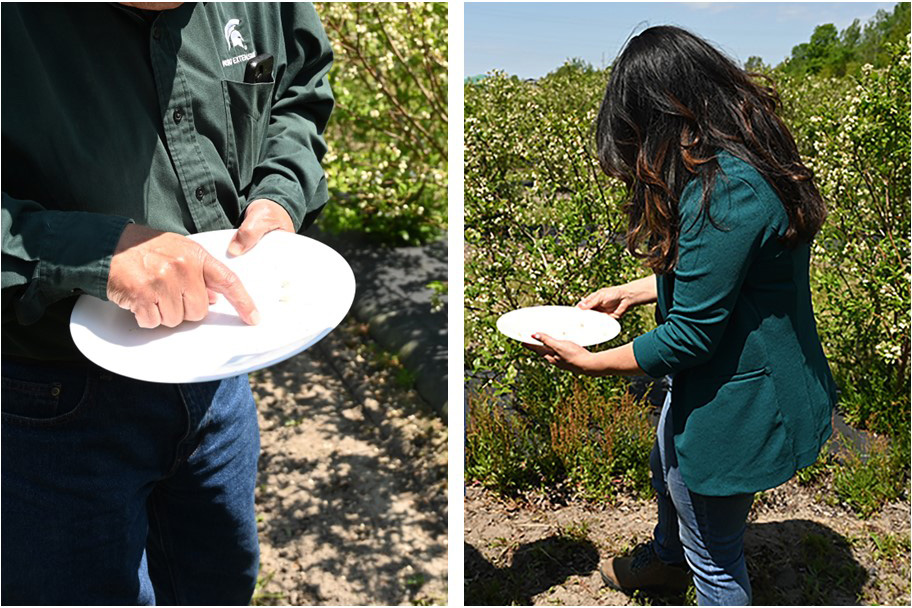West central Michigan small fruit update – May 16, 2025
Unseasonal weather conditions have triggered an early emergence of insect pests typically associated with the fruit crop bloom period, particularly flower thrips.

In 2025, weather conditions in west Michigan have once again followed a pattern like the previous two years (2023 and 2024): an unseasonably warm winter followed by alternating periods of high and low temperatures during spring. In west central Michigan, these conditions have led to early budbreak in blueberries and the emergence of early flower buds from the crown in strawberries.
Weather conditions
As of May 16, temperatures over the past seven days have remained above freezing, with nighttime lows around 42 degrees Fahrenheit and daytime highs in the 70s. These conditions have resulted in an accumulation of 290-degree days (base 50 F) since March 1. Despite the temperature fluctuations, rainfall has been scarce in early May, with less than 1 inch of precipitation recorded in the past week.
Regional differences
While west central Michigan remains under temperate conditions, southwest Michigan has experienced higher temperatures during the same period. Daily highs have reached the upper 80s, leading to a degree day accumulation of 360 (base 50 F). This temperature difference represents approximately a one-week developmental lead in southwest Michigan compared to the central region.
Pest issues
These unseasonal weather patterns have also triggered an early emergence of insect pests typically associated with the fruit crop bloom period, particularly flower thrips. Over the past three years, this pest has caused significant damage to blueberries and strawberries, with potential crop losses in blueberries reaching up to 20% in affected fields. Thrips are challenging to manage because they appear during bloom, and their damage can be mistaken for light frost injury (Figure 1). By the time growers recognize the issue, it is often too late for effective control.
Integrated pest management scouting findings
On Monday, May 12 and Wednesday, May 14, a survey conducted in Grand Junction, Michigan, and Allegan Cunty on the blueberry Bluecrop variety, which is in full bloom, revealed the onset of a thrips outbreak requiring immediate intervention. If left unmanaged, thrips feeding on flowers may result in a severe “June drop” of unpollinated fruitlets.
Flower thrips monitoring recommendations
To assess thrips presence in your fields:
- Use a white sheet of paper or a white tray (Figure 2).
- Gently tap flower clusters over the surface.
- Thrips larvae, which are currently active, will easily fall off.
Sample at least five different locations in your field. If you observe more than three to five thrips per flower cluster, treatment is recommended to prevent population buildup and potential crop loss (see Figure 2).

Insecticide options (bee-safe considerations)
If bees are still active in your fields, consider the following insecticides:
- Sivanto – labeled as “bee-safe,” but bees should still be covered during application.
- Assail 30 SG
- Delegate 25 WG
- Entrust 2 SC
Important notes
- Always consult the Michigan Fruit Management Guide (Michigan State University Extension Bulletin E-154) for proper application rates and recommendations.
- Avoid tank-mixing insecticides with fungicides, as this may increase toxicity to bees due to synergistic effects.
- Always read and follow the label instructions before spraying.
This work is supported by the Crop Protection and Pest Management Program [grant no 2024-70006-43569] from the USDA National Institute of Food and Agriculture. Any opinions, findings, conclusions, or recommendations expressed in this publication are those of the author(s) and do not necessarily reflect the view of the U.S. Department of Agriculture.



 Print
Print Email
Email




